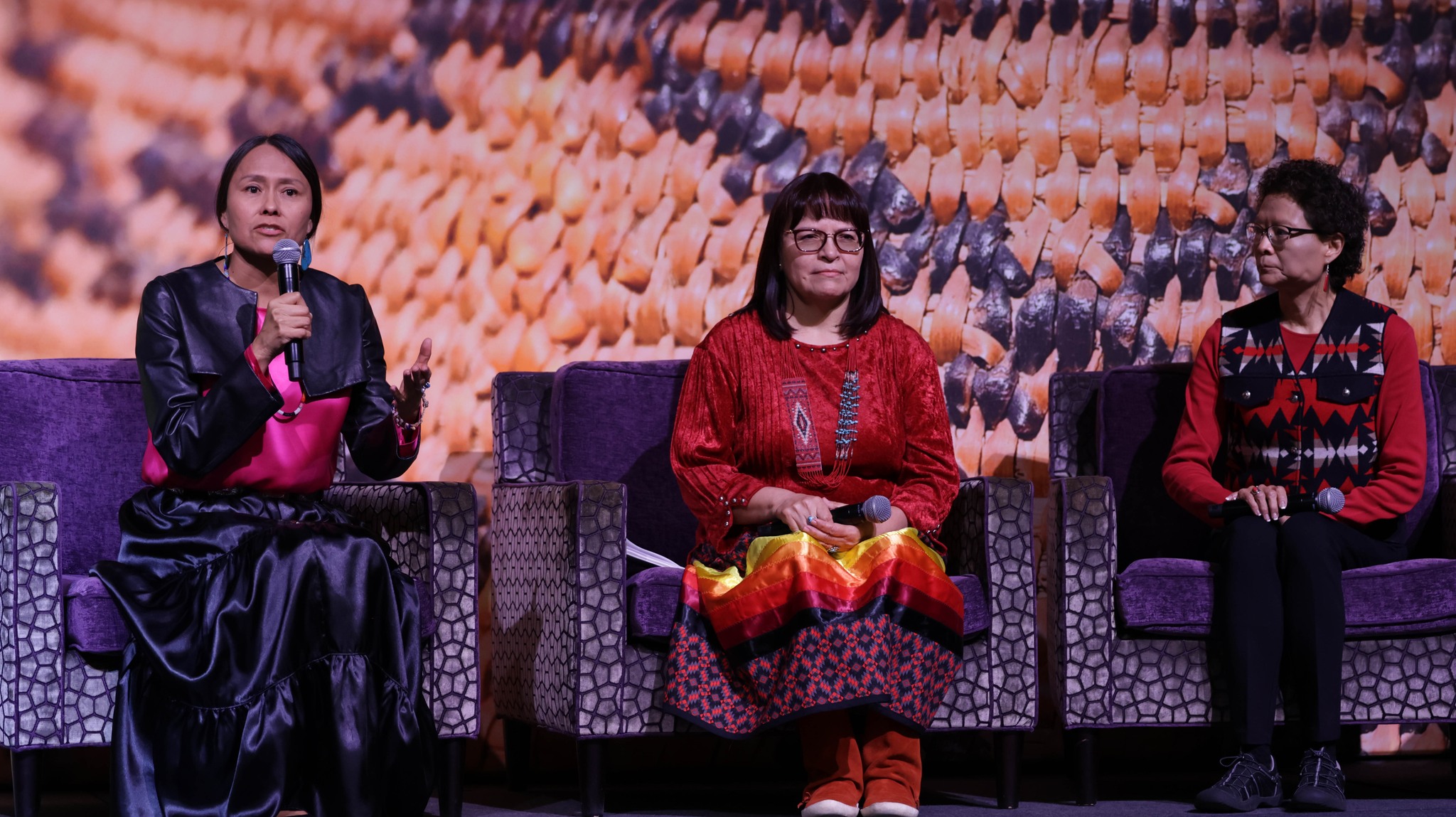
- Details
- By Chez Oxendine
- Energy | Environment
There was an air of cautious optimism as the Department of Energy convened with tribal, business, and nonprofit leaders during the two-day Tribal Clean Energy Summit last week in Temecula, California.
More than 700 participants gathered on Feb. 27-28 at the tribally owned Pechanga Resort Casino in southern California, meeting with Energy Secretary Jennifer Granholm and Department of Energy (DOE) representatives. Live-streamed panels were accessible online for both the first day and second day. Granholm was on hand to announce more than $400 million in new funding for renewable energy projects, many of them tribal.
The Office of Indian Energy (OIE) engaged in one-on-one sessions with tribal and nonprofit leaders regarding DOE loan programs, grants, and direct tax credits. Other workshops and panels showcased tribal clean energy efforts, such as the Hopi tribe’s transition from coal to utility-scale solar and the Confederated Tribes of Warm Springs’ efforts to improve grid resilience.
“Each of us has a moment of opportunity and leadership. Whether you're elected in your community or appointed to your role, or you're a clean energy developer, you have the power to make big things happen,” OIE Director Wahleah Johns, a member of Navajo Nation, told the audience during her opening remarks. “We organized this summit to make big things happen - to learn, to expand, to network, to find partners to work with and deploy clean energy.”
The event, held for the first time in a tribal venue away from Washington, D.C., was a markedly improved departure from prior summits in the same vein, according to Alliance for Tribal Clean Energy President and CEO Cheri Smith. The efforts to speak directly with tribal leaders in a more comfortable environment led to more engaged, informative discussions, Smith said, though concerns remained around the new funding announcements.
“That is new to this administration, that level of access and that level of engagement face-to-face. The general consensus from people I talked to is that they were really impressed by the event and having more tribes there. We have to applaud Wahleah Johns and her team for creating that,” Smith said. “But the money announcements were bittersweet, because it’s spread across some really nice projects, but it’s still not enough. There are still gaps in making these projects a reality.”
Big dreams, big hurdles
Teamwork was a recurring topic during each of the panels throughout the summit, with frequent praise for the DOE’s newfound outreach efforts and discussions of cooperation and information sharing between tribes embarking on new renewable energy projects.
Panelists shared advice on seeking partnerships with private companies, building a capital stack for larger projects, and turning utility scale projects into revenue drivers.
"Having people ready to do this work is key to what's happening now," said Sandra Begay, researcher and developer at Sandia National Laboratories, during a panel on the Navajo transition toward clean energy. "I think we can't understate the teamwork that is needed."
During her remarks, Granholm pointed to expanded DOE loan guarantees, tax credits, and a surge in outreach and technical assistance. It was the Energy Improvement in Rural or Remote Areas Program (ERA), though, that served as the central pillar of Granholm’s discussion as she announced $366 million in funding allocated to 17 projects across the country, 12 of which were located on tribal lands.
Granholm called the measure “historic,” it was the single-largest amount committed by the DOE to tribal energy projects.
“This [program] was not specifically for tribes. It was just energy improvements, for rural and remote areas,” Granholm said. “It just so happens that tribes submitted overwhelmingly great projects to be able to fund.”
The projects, ranging from solar installations for electrifying rural houses to hydroelectric plants meant to help build out new tribally-owned utilities, will bring economic benefits and improve tribes’ control over their own energy, in addition to combating climate change, Granholm said.
But that’s where the gaps come in, according to the Alliance for Clean Energy’s Smith. The projects in question remain under negotiation, where final funding commitments depend on proving whether or not the selected project can meet the needs outlined in each proposal. Between required matching funds — in some cases as much as 20% of the project cost — the pre-development costs, and systemic barriers, that’s a tall order.
Tribes already face hurdles when it comes to securing funding for energy projects, and while the ERA program was a step in the right direction, everything from costly environmental studies to systemic discrimination when dealing with state and local policies could stop a project in its tracks, Smith told Tribal Business News.
“When you're talking 10% of a utility scale, that's still too much for most tribes,” Smith said. “Then you’ve got your geological studies, your environmental studies, your feasibility studies … you have to de-risk the project. No partner wants to come in with you on these if you can’t completely de-risk the project, and that makes this stuff expensive.”
While those barriers remain, Smith said she had high hopes for the direction the DOE was taking, and again praised the venue and the direct engagement as a sign of better things to come.
David Sickey, former chair of the Coushatta Tribe who works as a senior consultant for the DOE’s Loan Program Office, echoed the sentiment.
Sickey said the summit provided a preview of what was ahead for the agency’s relationship with Indian Country.
“The funds are not just numbers on a balance sheet — they are tools for empowerment, catalysts for change. This summit provided a platform for discussions on how best to wield these tools effectively,” Sickey wrote in a statement to Tribal Business News. “In the wake of the Summit, the responsibility now lies on the shoulders of tribal leaders, policymakers, and advocates to translate the varied discussions into action.”
